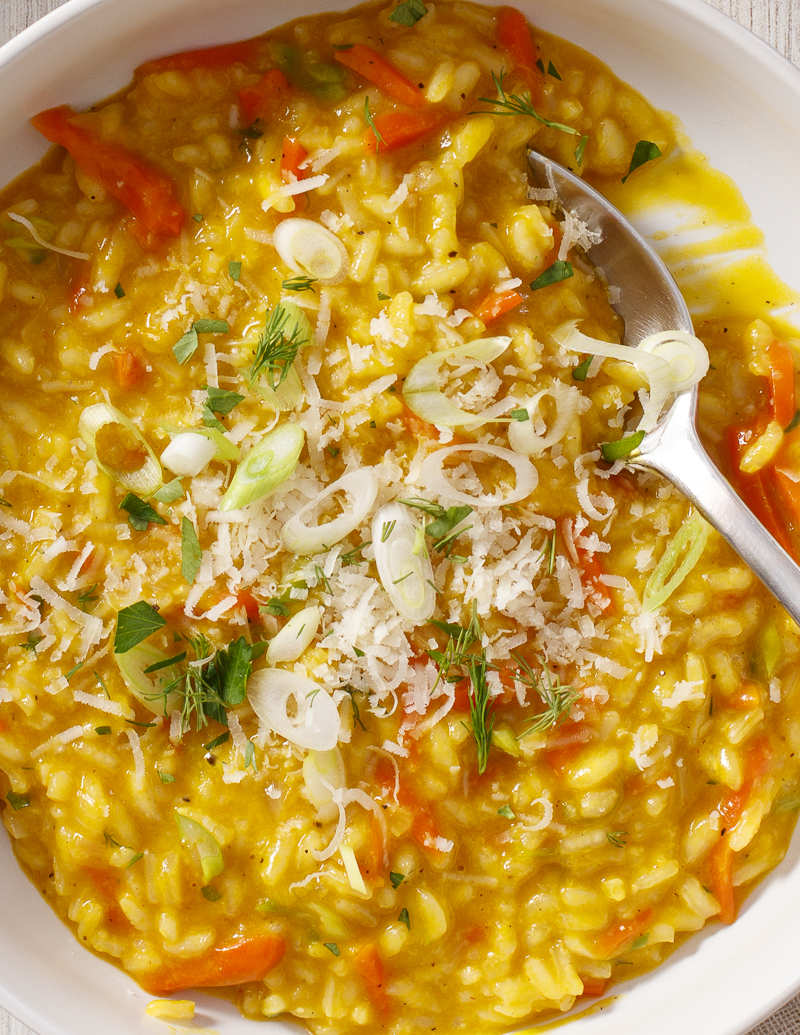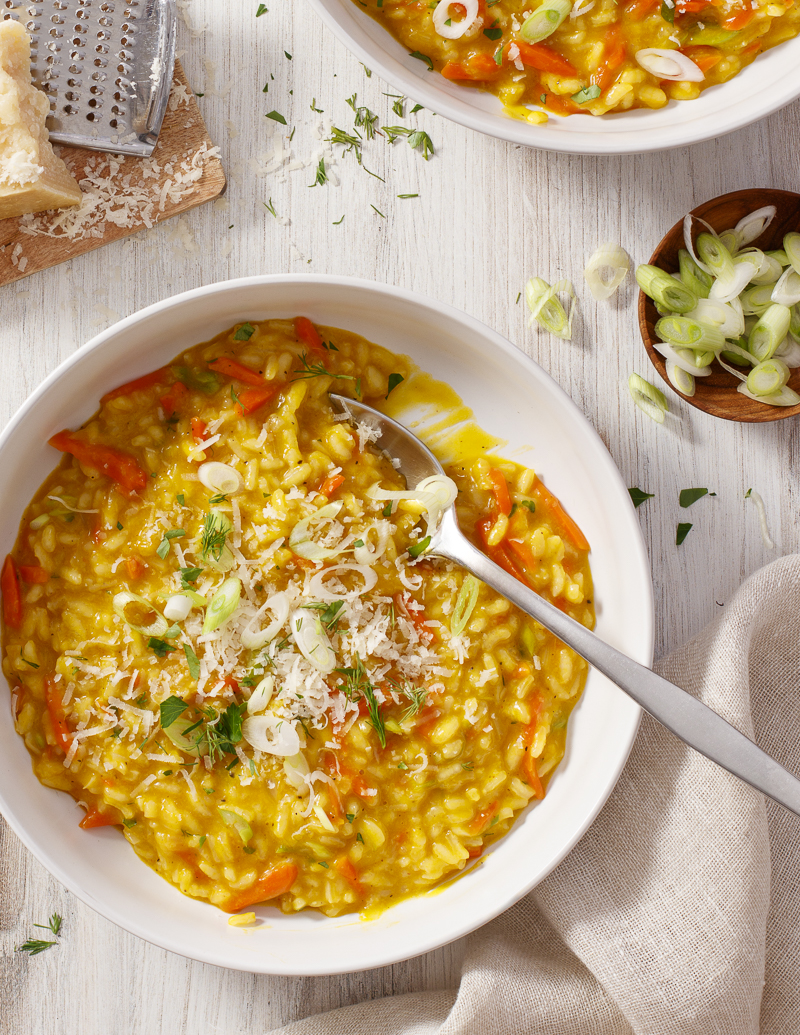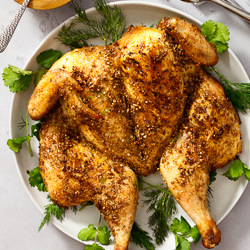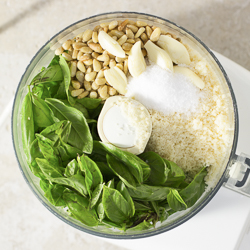Some friends called the other day with a culinary 911. Not an emergency per se, but they were making risotto and wondered—what’s with all the stirring?
Other rice dishes don’t require stirring. Not pilaf. Not Mexican rice. And not jambalaya. So why risotto?
Here’s what I told them—it’s exactly the stirring that makes risotto, well, risotto.
In other words, unlike those other rice dishes, risotto comes with a trademark luscious, creamy sauce (this Carrot Risotto with Scallions, for example). And it’s the stirring that creates the sauce.
See, you start with a stubby, starchy, short-grain rice—one that’s akin to what you’d use for sticky sushi rice—versus not-so-starchy long-grain rice, which you’d use for pilaf. And as your stir, you essentially scratch the starch off those stubby grains, making it available to thicken your cooking liquid and create creaminess. If you didn’t stir, you’d have rice in broth. But because you do, you have creamy, saucy heaven-in-a-bowl.
Friction, or grains scratching up against each other, is also why, unlike other rice dishes, you add risotto’s liquid a little bit at a time. If you added the liquid all at once, the grains would just be floating around, not rubbing up against each other, not creating sauciness.
So, yes, making risotto means stirring and patient, incremental additions of liquid. Which lead many to think risotto is somehow difficult or challenging. But what’s so hard about stirring or ladling? A monkey could do it.
Counter that “effort” with the fact that risotto is basically a one-pot meal. Okay, two pots if you count the saucepan that keeps your cooking liquid hot. So in exchange for your attentiveness, in addition to a uniquely swoonworthy dish, cleanup is quick and painless.
You’ll find recipes for slow cooker risotto and pressure cooker risotto and other “easy” risottos—but I’m dubious. You might be able to cook it sans stirring, but I can’t believe it’d turn out nearly as—risotto-y.
I’ll stir.
Risottos to stir up:
Carrot Risotto with Scallions
Herbed Pumpkin Risotto with Aged Balsamic
Other rice and rice-ish recipes:
Seafood and Andouille Jambalaya
Spring Chicken and Rice Stovetop Casserole
Orange Chicken Stir-Fry with Rice Noodles
Scallop Scampi with Spring Onions and Orzo











